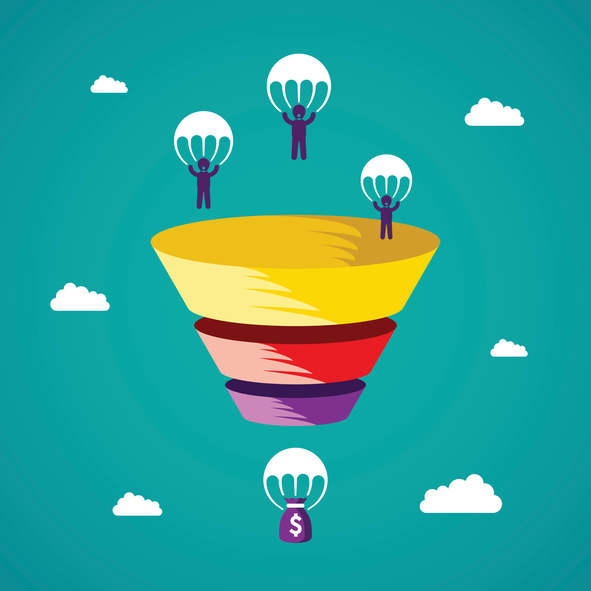Content for Each Stage of the Sales Funnel
Imagine meeting someone for the first time and being subjected to hearing his or her entire life story. Unless you’re talking to the “most interesting man in the world,” you’d probably consider this too much information and look for an escape route. It’s more natural to learn about someone over the course of multiple interactions – as you get to know someone, the amount and type of information you share tends to evolve. This is also true of customer relationships.
In most cases, before a person makes a purchase, he or she will go through a process called a “sales funnel.” The sales funnel (also referred to as the buyer’s journey) consists of different stages a customer completes prior to buying a product or service, including awareness (top of the funnel), consideration (middle of the funnel) and decision (bottom of the funnel). As you might expect, the more complicated and costly the product or service, the lengthier the process. And, though the process is likened to a funnel, many buyer’s journeys are more like a meandering path or even a pretzel! In other words, it’s not always a linear process.
The purpose of content marketing is not to inundate your audience with your company’s history and product/service attributes, or brag about your employees – at least not all at once! Good content should engage customers at various stages along their buying journey with the “appropriate” information. It seems a little aggressive to say you want to push them down the funnel, so think of it as helpfully guiding prospects along a path that ends with a purchase! In fact, this process of developing relationships with buyers at every step of the journey is called “lead nurturing.”
Of course, to nurture someone, you need to know a bit about that person and their needs. Therefore, understanding your customers and developing buyer personas is the first step. When you combine these buyer personas with the buyer’s journey, you can create highly-targeted content. In general, however, there are certain types of content that work well at each stage:
- Awareness – At this stage, people are looking for information. They’re trying to solve a problem, get an answer or meet a demand. Content should be focused on the buyer’s pain points, anticipating their needs and providing helpful materials in the form of blog posts, research reports, eBooks, white papers and educational articles.
- Consideration – This is also called the evaluation stage, as potential customers are comparing different options and conducting in-depth research. You’ve captured their attention, so now it’s time to provide helpful content such as vendor and product comparisons, case studies, product literature, how-to videos and live demonstrations.
- Decision – As buyers start to assess the final criteria that will determine the solution that best fits their needs and budgets, they may want to reference vendor and product comparisons (if they haven’t already done so), take your product or service for a test drive with a free trial, read case studies, see live demonstrations, or consult with a sales representative.
It’s important to remember that every funnel or buyer’s journey is unique depending on your industry, the product/service, pricing and the behaviors/preferences of your target audience. Once customers make a purchase, it’s also important to continue to nurture them, which creates loyalty. Repeat customers re-enter the funnel or wander back on the path at different points.
When you fail to provide relevant content or focus on your company instead of your customers, you risk creating a disconnect. However, when you produce engaging, helpful dialogue, the path prospects take will often lead directly to your door.
